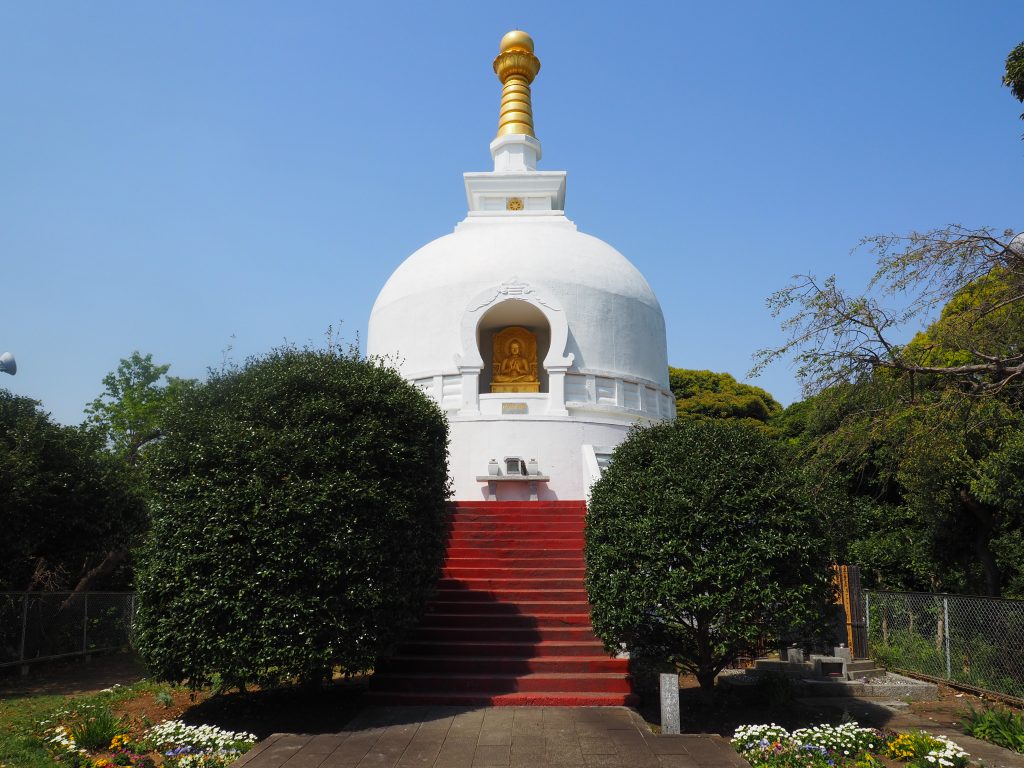I have already mentioned St. Nichiren in my very first article, by which I started this website of mine alajournal.com, when I was writing about Nam Myoho Renge Kyo. Now we find ourselves in a temple directly connected with him. St Nichiren was born on 16th February 1222, in a fishing village in present Chiba prefecture. At the age of 12 he was sent to nearby Seichou Temple to learn the right way of life. He earnestly started to study Buddhism. He moved to Mt. Hiei in Kyoto, the center of Buddhism at the time. He became devout believer in Lotus Sutra.
At the age of 32 he started his missionary work to spread the teaching of Lotus Sutra. The situation in Japan in those times was “like hell” – famine spreading all over the country, civil wars, crisis in diplomacy. This worried St. Nichiren and he published a book Rissho Ankokuron. In it he suggested to the Kamakura Bakufu = Shogunate, that the Shogunate should attain national peace and help the public based on the teachings of Lotus Sutra. Unfortunately for him, the Kamakura Shogunate took this his criticism as a slander against their policy.
Because of this, St. Nichiren was caught on 12th September 1272. He was taken to this place – Tatsunokuchi = dragon-head gargoyle where the gallows were already standing. He was put inside a cave. In the moment of his execution the executioner was blinded by a flash of a mysterious shining object flying from Enoshima island side. Lightning struck his sword. Because of this miracle the execution was suspended. St. Nichiren was exiled to the Sado island. Following his release he came back to Kamakura. Then he went to the Mt. Minobu – Yamanashi prefecture on the invitation of believers. There he taught his disciples and followers to pursue the Lotus Sutra and was practicing asceticism.
Nine years later he went down the Mt. Minobu for a cure of illness. He arrived at Ikegami, Edo – present Tokyo and he passed away there on 13th October 1282 at the age of 61. He was surrounded by many believers, followers and disciples chanting the Sutra. The construction of Ryuukou Temple started in 1337 by St. Nichiren´s disciple, st. Nippou, with a statue of St. Nichiren and the stone on which St. Nichiren was force to sit at the time of his religious persecution on this place. Every year a Buddhist memorial service Ryuukou Hounane is conducted here on 12th September.











